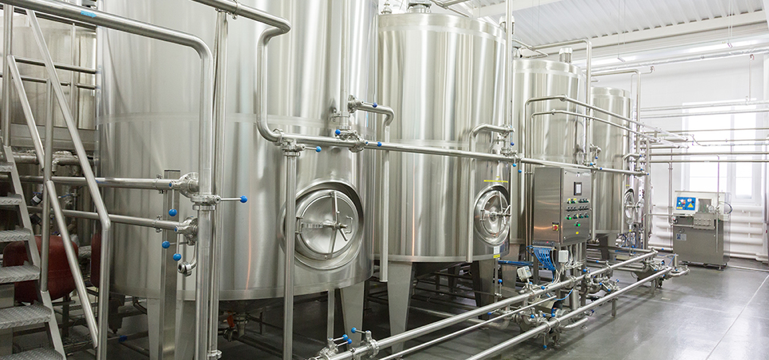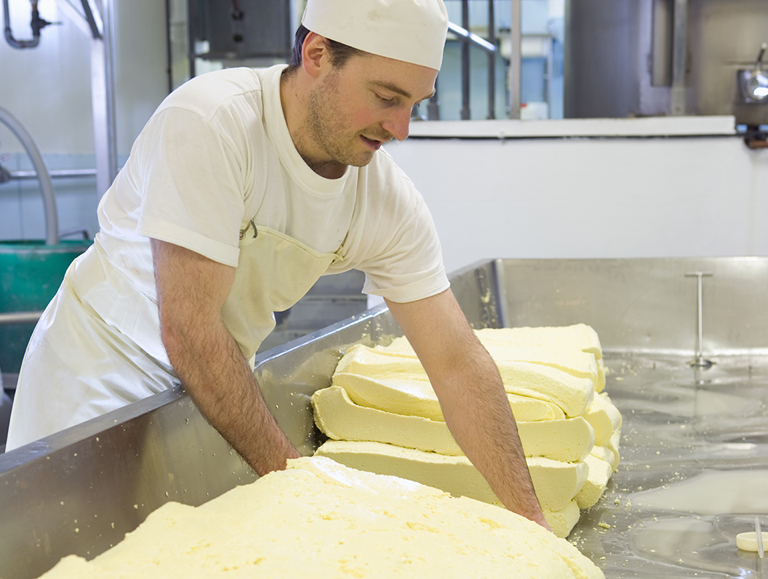In response, an entire industry has risen to meet the needs of industrial sites facing nuisance odor complaints or mandates to eliminate regulated emissions.

Challenges posed by industrial odors intensify as population growth sends commercial and residential developments sprawling toward industrial sites. Nuisance odor complaints are more frequently lodged against these facilities as neighbors feel property values and quality of life are threatened by foul smells.
In response, an entire industry has risen to meet the needs of industrial sites facing nuisance odor complaints or mandates to eliminate regulated emissions.
Industrial odors and emissions are typically controlled by either physical, chemical or biological means. These systems are described in further detail below.
Physical / chemical odor control
Chemical odor control systems rely on synthetic solutions designed to bind to odorous compounds. They come in many different forms and work in different stages of an industrial process.
Chemical additives and sprays
Countless chemical formulas have been developed to treat diverse compounds generated by industrial processes. The goal is simple: use these chemicals to bind to odorous compounds to prevent them from entering the atmosphere.
In chemical additive systems, the chemicals are incorporated into water impacted by odorous compounds. The chemicals eliminate the odorous compounds while theyʼre still in the water phase. Chemical spray systems are designed to centralize odorous air in a vessel, and then spray chemicals which trap and eliminate compounds in the air phase before releasing clean air from the chamber.
Chemical systems work well in some settings, but a major drawback is that chemicals must be frequently replenished –often at great cost– and many of them are harmful to humans, putting operators at risk.
Adsorbents
These are typically vessel-based systems where odorous air is gathered to a single treatment location. Porous activated carbon or other adsorbent media catches the offending compounds in impacted air as it travels through the vessel. Clean air is released while the odorous compounds remain trapped in pores in the adsorbent media.
Adsorbent filters, at peak performance, result in very clean air. However, performance of these systems diminishes as the compounds pile up inside the filter. The adsorbent media must be cooled, cleaned and re-activated —or simply replaced— causing down time and extra expense.

Ozone
Ozone is another term for O3, a very unstable form of oxygen that acts as an aggressive oxidizer. Odor control via the use of ozone has shown to be effective as an odor and emission control solution for low-pollutant concentrations. However, while ozone is readily available, it degrades to more stable O2 atoms in microseconds in uncontrolled settings. Its instability requires careful and costly transport and storage. In addition, ozone rarely reduces more than 80% of the odorous compounds in air. For many applications, thatʼs not good enough.
Ultraviolet treatment
In controlled settings, ultraviolet radiation can be harnessed and focused toward odorous compounds. The radiation creates ozone and other free radicals that aggressively oxidize offending compounds. However, as with ozone, UV treatments rarely exceed 80% odor reduction, and are therefore used most often where pollutant concentrations are low.
Aeration
Industrial wastewater is responsible for the bulk of industrial odors. Odorous compounds are formed in water when byproducts of industrial processes degrade in anaerobic conditions, which are then released into the air. Aerators stir up water in treatment basins to increase the oxygen content, allowing for aerobic degradation that precludes the formation of odorous compounds.
Biological odor control methods
Instead of oxidizing odorous compounds using physical or chemical means, biological odor control methods rely on bacteria and other microorganisms to metabolize them.
Biofilters
Centralized air is piped to the bottom of a rectangular pit. The air is then dispersed upward through a layer of porous rocks or gravel. From there, it travels further upward through a bed of some type of organic media—it could be grass clippings, peat moss, leaves, tree bark or any number of other organic materials. There, it encounters natural bacteria that feed on the compounds polluting the air. The result is cleaner air emitted into the environment.
However, biofilters take up lots of space and may not treat odors or emissions as efficiently as other methods. Their performance diminishes over time and the media must be constantly replaced. This leads to costly and inconvenient downtime, during which odors go untreated. To learn more about how biofilters compare to other methods, read this article.
Bioscrubbers
Collected air is forced upward through a vessel filled with synthetic media. Water containing microorganisms is constantly recirculated through the system. The microorganisms in the water feed off the odorous compounds headed toward the top of the chamber and clean air is released. These systems rely on the odorous air running through them to maintain an environment where the microorganisms can thrive.
But the equipment needed to recirculate water in bioscrubbers adds to their up-front and operating costs. It also means there are more moving parts in the system, and more moving parts means a greater risk of a breakdown.
Biotrickling filters
Biotrickling filters feature microorganisms that grow within structured synthetic media inside a reactor vessel. Irrigation water passes through the vessel to rinse away the metabolized compounds as the air travels upward. Unlike bioscrubbers, biotrickling filters do not recirculate water. As an added benefit, the introduction of new irrigation water allows these systems to support a wider variety of microorganisms, making them able to eliminate a greater diversity of odors and emissions.
Take a closer look at how bioscrubbers and biotrickling filters work here.
Choosing the right method
Each industrial facility is unique. Its inputs, processes, ventilation and wastewater treatment characteristics all play a role in the formation and release of odors and emissions. Certainly, one size doesn’t fit all.
Successful industrial odor and emission control brings facilities in compliance with regulations and returns them to the good graces of their neighbors. BioAir Solutions partners with customers and provides start-to-finish support. Our BioAir Complete® program starts with an on-site evaluation, is followed by the custom design and construction of your odor control equipment and ends with a closely-monitored startup to ensure your system is working. In select locations, we’ll even run the system for you.
We’re ready to answer any additional questions you have. Get started here, where you can contact us or find your nearest sales representative. Or, keep learning by reading our introductory guide to industrial odor control.
